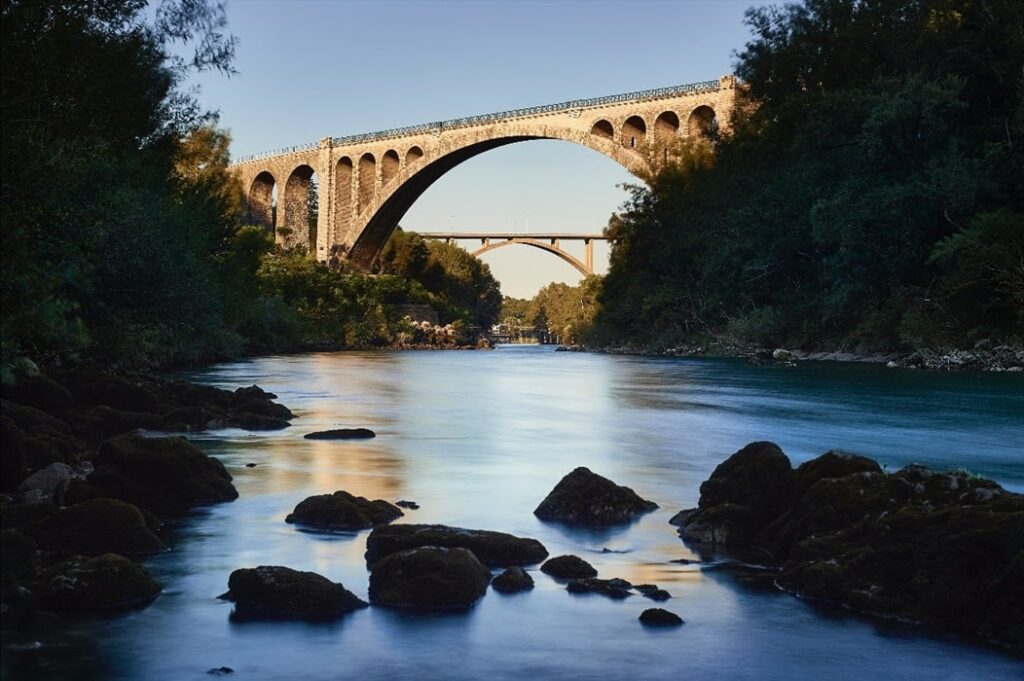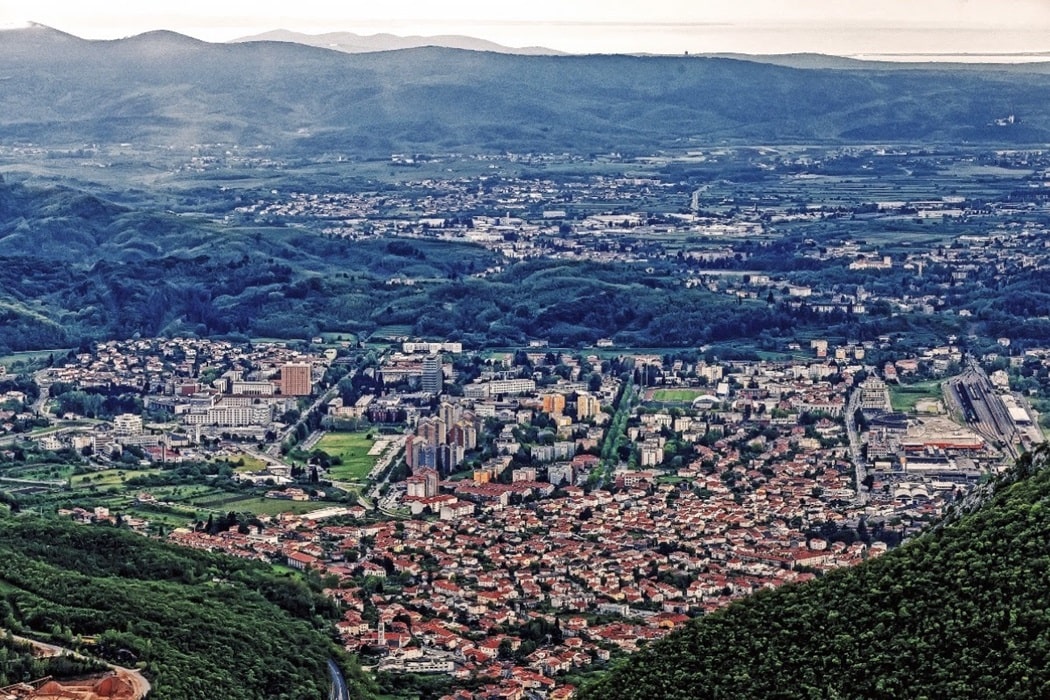The twin towns of Nova Gorica and Gorizia, European Capital of Culture 2025, are presenting a cross-border programme to promote art, culture and sustainable development. Events such as concerts, dance performances and innovative art installations focus on the dialogue between cultures and create space for mutual understanding.
Image above: Nova-Gorica-und-Gorizia-2024 favouriteized, David Verlic
In 2025, Nova Gorica and Gorizia, two halves of a cross-border city between Slovenia and Italy, will jointly appear as the European Capital of Culture.
In a landscape of rolling hills and fertile orchards, the emerald-green Soča meanders from the Alps between the vineyards of the Brda and Vipava valleys into the plain. Here, where the mysterious Karst and the blue of the Adriatic seem close enough to touch, the historic Austrian ‘Nice’ was joined by a modern, young neighbouring town after the Second World War. The two cities, which were separated by a border for decades, are presenting an extensive programme that opens the door to a new, peaceful coexistence and serves as a model for dialogue and exchange. Under the motto ‘GO! Borderless’, visitors are invited to discover and celebrate the rich, closely interwoven heritage of the twin cities.
The towns of Nova Gorica and Gorizia, with around 32,000 and 34,000 inhabitants respectively, are closely linked due to their location on the border between Slovenia and Italy. Cross-border cooperation and cultural proximity flourished when Slovenia joined the Schengen area in 2007. Even though Slovenia temporarily reintroduced controls at its borders with Croatia and Hungary on 21 October 2023, the opening of the border between Nova Gorica and Gorizia remains a strong symbol of Europe growing together.
In addition to the numerous cultural events, the project also promotes sustainable urban development. It focuses on initiatives such as the EPIC programme, which reinterprets the historical and cultural narratives of the region, and on ‘green’ projects such as the creation of urban forests and habitats for insects and bats. With the redesign of Europa Platz, the cities are demonstrating how art and culture can bring people together: The central element of the square is the mosaic of the new Europe with the marking 57/15, transferred from the former border stone that separated the two countries for many years.

Programme
- Piano concert by the renowned pianist Alexander Gadjiev
- Dance performance by the MN Dance Company with costumes by Matea Benedetti
- Reception and tasting of Slovenian wines from the region
- Moderation: Vivian Perkovic (Kulturzeit, 3sat)
07 to 09 February 2025
Weekend of the official opening ceremony
The artistic programme ‘Station to Station’ brings the citizens of both cities together
Friendship march and Europe Week
In partnership with Chemnitz, also European Capital of Culture 2025
26 to 28 September 2025
Flavour without borders
Hundreds of thousands of visitors come to the region to discover its cuisine
03 to 05 December 2025
Closing ceremony and inauguration of the Christmas lights Lumi e Lucci in Italian, Ta veseli dan in Slovenian – all the more reason to celebrate!
About
The European Capitals of Culture are a project that puts culture at the centre of European cities and is supported by the EU. For one year, art and culture take centre stage. In 2025, Chemnitz will join Nova Gorica and Gorizia in holding this title. Nova Gorica is not the first Slovenian city to be named Capital of Culture – Maribor was the first Slovenian city to receive this honour back in 2012.
WHERE?
Nova Gorica, 5000, Slowenien
Gorizia, 34170, Italien






